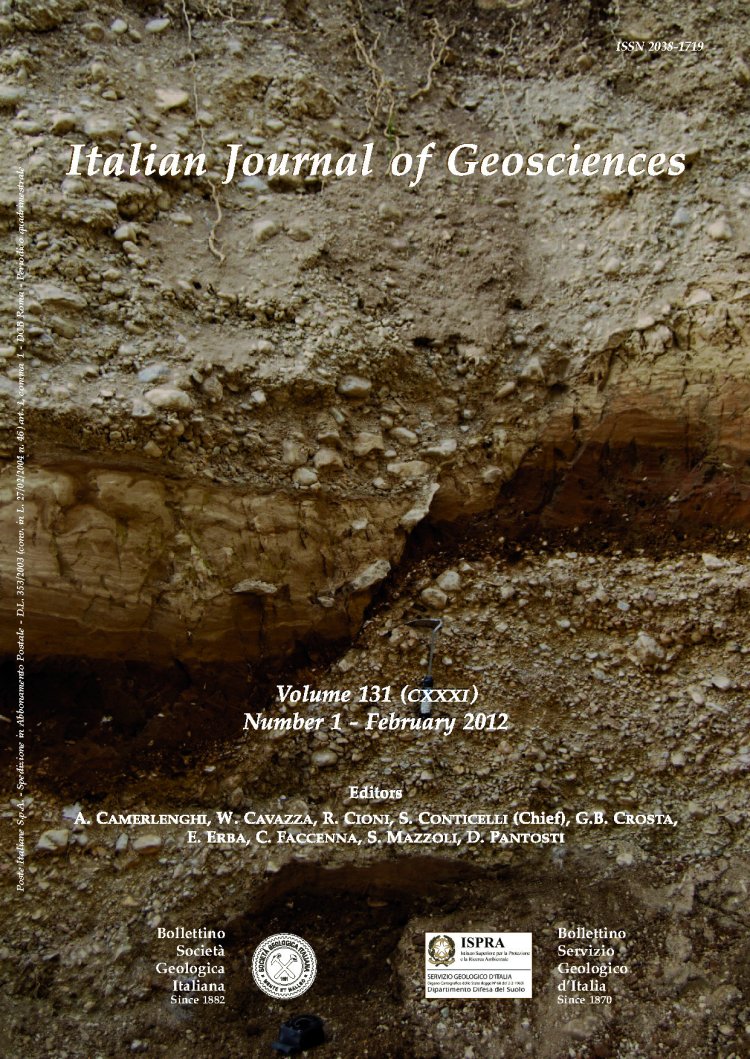
Tectonic control on the sedimentary architecture of Early Mesozoic mixed siliciclastic-carbonate Pseudoverrucano successions (southern Tuscany, Italy)
Anna Gandin(*)
(*) Dipartimento di Scienze della Terra, Università di Siena, Via Laterina, 8 - 53100 Siena (SI), Italy. Corresponding author: Anna Gandin, Email address: gandin@unisi.it
Volume: 131 (2012) f.1
Pages: 77-94
Abstract
The mixed siliciclastic-carbonate successions of Early Mesozoic age exposed in the Pseudoverrucano tectonic units, along the coast of southern Tuscany (Montebrandoli and Punta delle Rocchette, Early Liassic) and in the Monti dell'Uccellina (Porticciolo di Cala di Forno and Salto del Cervo, Late Triassic) are characterized by fossil
assemblages suggesting a close relationship with the coeval, mainly carbonate successions of the "Tuscan Series" while the depositional features are completely different. The composition of the mixed facies are similar, characterized by: i) recurring fining-upward sequences with well rounded but poorly selected white quartz-conglomerates, ii) coarse quartz sand grading to lagoonal lime-muds, or iii) thin intercalations or isolated quartz pebbles enclosed together with shell debris, within open marine although shallow carbonates.
The depositional environments correspond to alluvial-fan complexes on narrow coastal plains merging with sandy beaches and lagoonal to shallow marine settings where the carbonate micritic deposition prevailed. This sedimentary style suggests that unsorted quartz debris was transported from an adjacent uplifted source area by gravity currents through very narrow coastal plains, and flowing into coastal lagoons or directly into the open sea, mixed coarse, land
derived debris with open marine carbonate muds. The peculiar vertical evolution of the Pseudoverrucano facies suggests that the episodic input of siliciclastic materials was connected with storm events most probably triggered by tectonic pulses since no evidences of eustatic or climatic constrain on the sedimentation is apparent.
The depositional features and fossil content of the mixed siliciclastic-carbonate Pseudoverrucano successions argues for a coastal sedimentation on narrow shelves delimited by active, fault-bounded highs, representing the landward extension of the epicontinental/pericontinental pelagic basins that from late Triassic in a regime of continental rifting, developed on the east-facing shelf of central Pangea.
Keywords
Mixed siliciclastic-carbonate sequences, "Pseudo-verrucano", units, Rhaetian-Liassic continental rifting, Tuscan series, Southern Tuscany.
Get Full Text